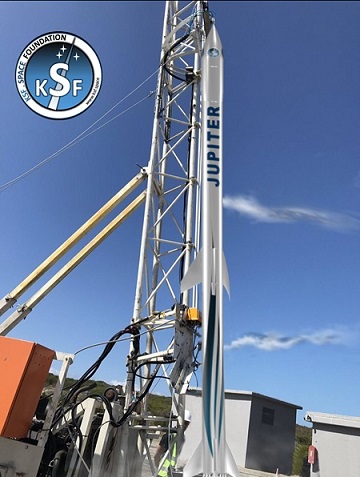The Kansas University Aerospace Department, located in the United States, was a key partner in the development of the KSF Space Foundation’s first suborbital rocket, which was given the name JUPITER 1.
Jupiter 1 is a reusable and cost-effective suborbital rocket, and the KSF Space Foundation is pleased to announce its development. When a spacecraft’s trajectory does not completely around the planet or moon from which it was launched, it is said to have made a sub-orbital spaceflight because it did not complete one orbital revolution. Vehicles of this type can travel at speeds of two to six times the speed of sound. The KSF Space Foundation is going to bring down some of the obstacles that are in the way of space exploration with this rocket launch. The goal of the project is to create a space mission with a budget that is manageable for educational institutions such as universities, colleges, and schools, and to deliver the most cost-effective Cubesat Kit for educational outreach currently available on the market.
The JUPITER 1 rocket was the first non-governmental organization Mach +3 Suborbital rocket. To be considered a suborbital rocket, a vehicle must be either wholly or partially propelled by rockets, with the thrust being larger than the lift during the vast majority of the rocket-powered phase of the flight. It was developed through a partnership between the Kansas University Aerospace Department and the Kansas Space Foundation (KSF Space Foundation). Because it has two stages and can be reused, the JUPITER 1 rocket is an efficient and cost-effective option for academic institutions. It has a length of 4 meters, is backed by first-rate recovery systems, and is able to achieve an altitude of apogee greater than 30,000 kilometers. The impending rocket launch, which will feature an economical rocket launch, will usher in a new era of environmentally responsible space exploration.
In addition to that, this rocket has the capability of transporting Cubesats and Nanosatellites, as well as conducting hardware flight testing. This is done to ensure that the hardware will pass all of the necessary tests, such as thermal, vibration, and telecommunication, before it is put through an actual orbital flight scenario and receives certification. Moreover, researchers, engineers, technicians, and educators would all benefit from having access to a user-focused application that allows for suborbital research to be conducted in a hands-on setting. It is essential to acquire technical and scientific expertise, and frequent, low-cost flights could increase opportunities for hands-on learning, participatory research, and eventually personal involvement in spaceflight. If the feasibility is proven, this might open up new avenues for education and training for the future generation of scientists, engineers, and space explorers by allowing them to work on a variety of payloads from idea to operations within the course of a single academic program. There is a plethora of exciting opportunities for students, teachers, and members of the public to be a part of meaningful projects.






